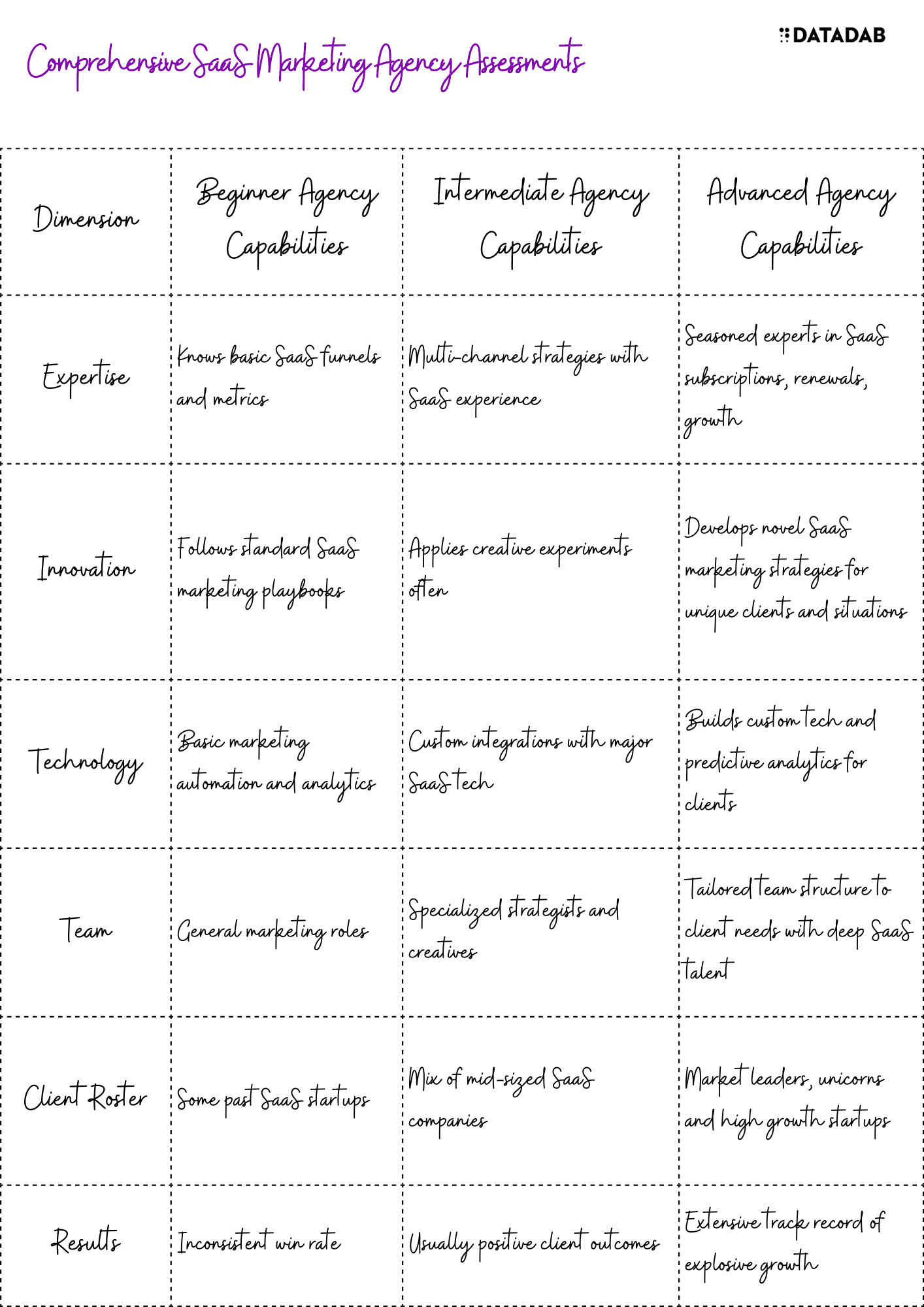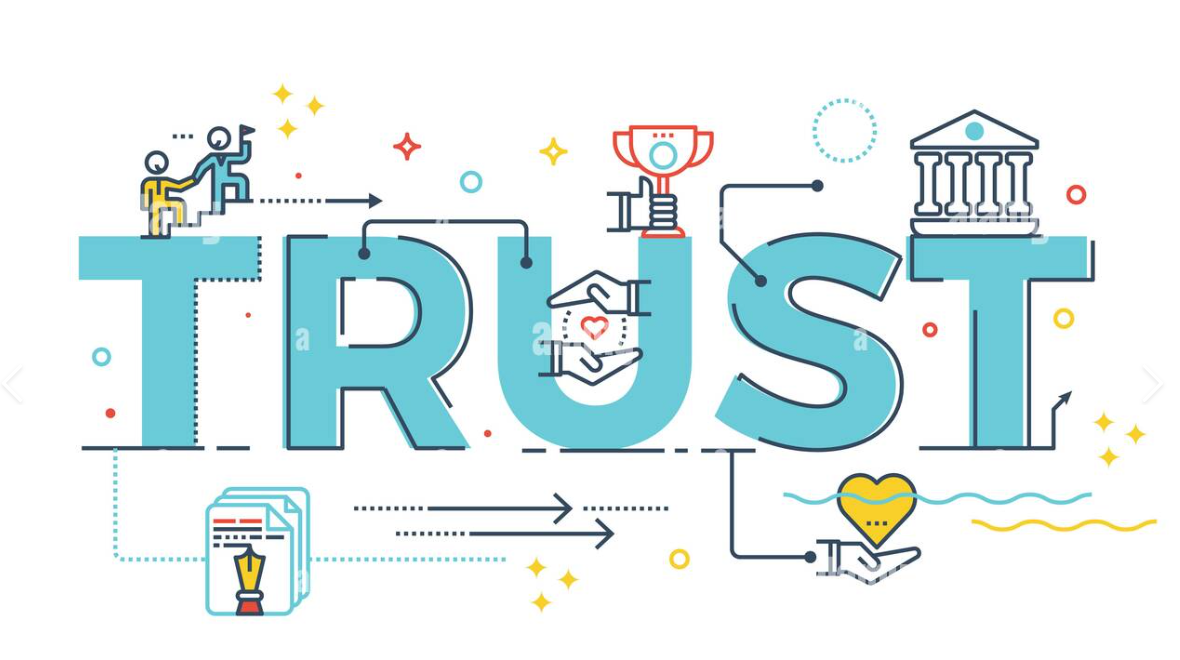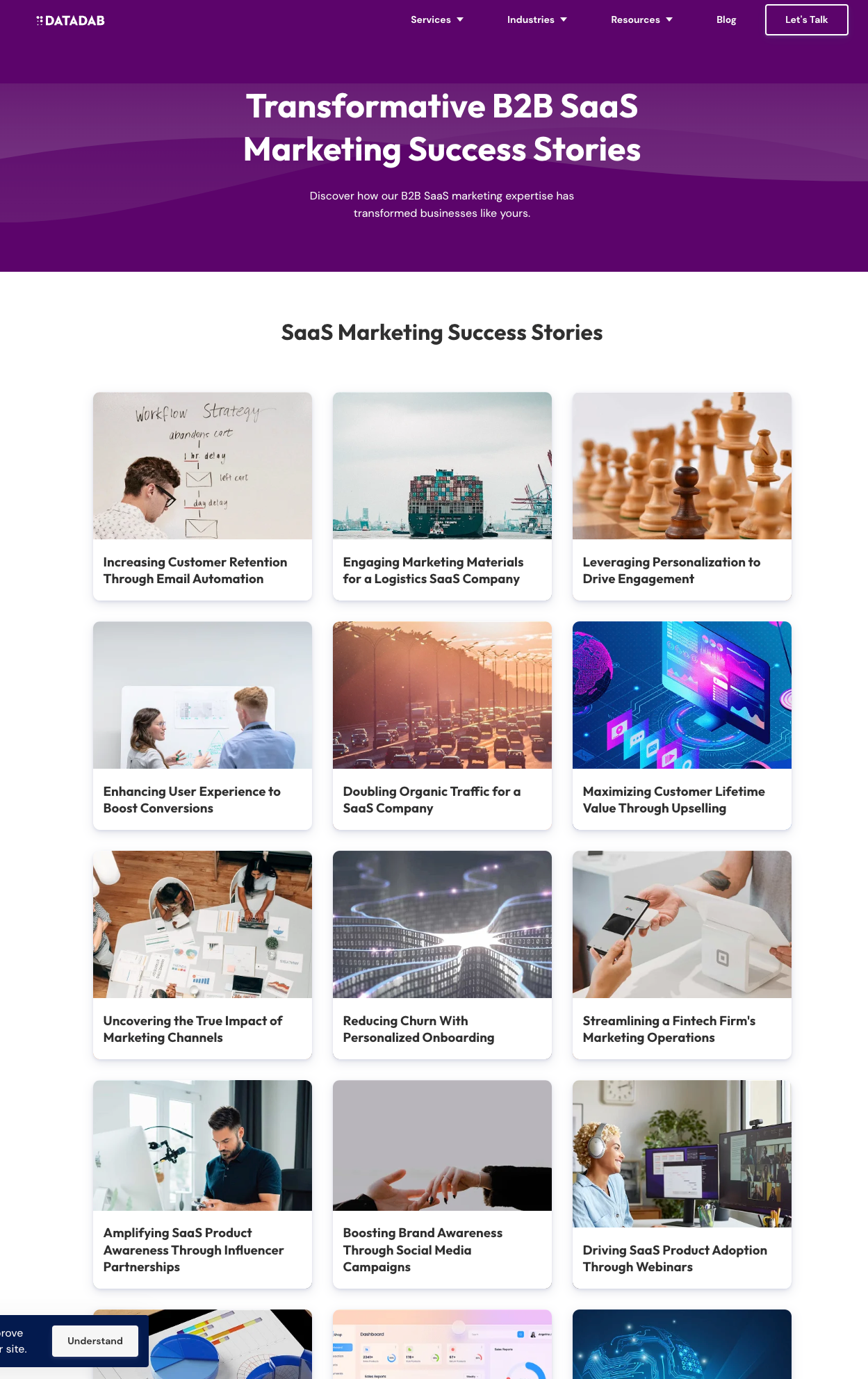Finding a marketing agency that can rocket fuel your SaaS startup is tougher than catching a unicorn 🦄. You need to find those rare gems with battle-tested strategies who also share your mission.
But make the wrong choice by glossing over slick presentations and the whole partnership can nosedive fast 📉. Before you know it, you've blown budgets and spilled creative energy with zilch results.
So how do you lock down proven players primed to level up your SaaS...without settling for empty overpromises or awkward fits?
Well, let's find out. In this guide, we’ll cover:
- How to get crystal clear on the unique superpowers you need from an agency right now
- The key traits that separate SaaS marketing contenders from pretenders
- Why aligning your vibe and values matters BIG TIME
- Tactics to dig into results and spot overinflated claims
- Tips for setting up dream teams built to last

Identifying Your SaaS Company’s Unique Marketing Needs
Before you even start evaluating agencies, an honest assessment of where your marketing stands today and where you want it to reach sets the foundation.
The first step is gaining clarity on your specific marketing requirements as they relate to your SaaS product, customers, growth KPIs, and overall phase and maturity of your company.
Every SaaS organization has unique strengths, weaknesses, opportunities and areas for improvement when it comes to marketing. Outlining these helps create a targeted approach for identifying agency partners capable of addressing your needs.
Assessing Your Current Marketing Efforts and Goals
Start by honestly evaluating the current state of your marketing. Some key assessments include:
- Current channels and strategies - Review the marketing channels and campaigns currently utilized such as paid search/display ads, email nurturing, content marketing, referrals etc. How effective have efforts been in each channel? Are there any obvious gaps?
- Performance analysis - Dig into metrics that matter across your funnel - traffic, leads, MQLs, SQLs, opportunities, customers, upsells etc. Where are conversion rates lagging? What’s working?
- Staff strengths/weaknesses - Document strengths and development areas for your current marketing personnel related to strategy, creative, ops/tech etc. Where might you benefit from supplemental help/expertise?
- Business & revenue goals - Clarify your targeted business and marketing KPIs for the next 12–18 months. How much growth, which metrics? What’s needed to accelerate momentum?
With this current state analysis in hand, you can start defining the profile of an agency partner that can address current problem areas and propel growth. Facilitate internal alignment on the outcomes a new agency partner should deliver for your organization if the engagement is to be considered successful.
Document 3-5 high-level roles you want the agency to play in bolstering your marketing efforts as measurable targets. For example:
- Improve website conversion rate by 25% within the first year
- Double inbound lead flow within 8 months
- Reduce cost per lead by 30% over the previous year
With a realistic understanding of existing capabilities and concrete goals now framed, you’re ready to start screening agencies.
Criteria for Evaluating SaaS Marketing Agencies

Separating true SaaS marketing experts with proven results from empty hype is the heavy lift. Let's look at some of the key indicators of excellence to dig for.
Let’s move to the criteria you should assess to shortlist viable SaaS marketing agency partners for further consideration.

Experience, Expertise, and Case Studies
First, examine an agency’s proven experience marketing SaaS or subscription style solutions similar to yours. Ask:
- How long have you specialized in SaaS tech? Seasoned SaaS marketers will be aware of recurring playbooks and challenges unique to selling software/cloud services. They’ll have more tailored strategies in their arsenal.
- Do you have experience in our category/vertical? Relevant vertical expertise indicates a richer understanding of your buyer personas, churn risks, and market landscape.
- What client case studies apply? Validate through provided case studies that past clients faced analogous scenarios the agency was able to positively impact. Size up the claimed ROI.
Ideally, request 2-3 customer references you can directly inquire with on deliverables and satisfaction. Hearing firsthand testimonials can reveal much more about working relationships than polished case studies alone.
Client Testimonials and Agency Reputation
Expanding on this point further, the reputation of an agency and qualitative feedback from past clients merits significant weight in evaluations.
- What do client testimonials highlight? Listen for client commentary pointing to stellar service, creative vision, collaborative interactions, and ultimately – tangible impact on their business.
- Any marquee logos? While name-dropping is not everything, awareness of an impressive client roster indicates ability to attract and retain reputable customers. Probe their tenure working with standout companies.
- Industry recognition received? Similarly, take note of any awards, media features or inclusion on ranked shortlists calling attention to their work and customer satisfaction. Third-party validation indicates valued talent.
Carefully assessing credibility through the lens of those served reveals much more than claims made directly by the agency alone.

The Importance of Cultural Fit and Communication Style
Technical expertise alone fails when teams don't jive intuitively in work and life philosophies. Judge the “soft” compatibility, revealing greater agency potentials.
Now you’ve separated demonstrated experts with applicable SaaS specialization from those less suited. But technical qualifications alone don’t guarantee the optimal partnership. The softer side of collaboration is equally critical.
Cultural alignment and communication compatibility indicate a higher likelihood of an enjoyable, productive working rhythm. Without it, even the most seasoned firm may flounder.
Ensuring Alignment with Your Company’s Values and Vision
Consider these cultural fit factors when vetting agencies:
- Do our missions align? You want an agency invested in the vision behind your product - not just hired hands. Ensure motivations and values sync up reasonably well.
- What is their collaboration style? Agencies have personalities too. Make sure work styles and rhythms click to enable fluid partnerships. Scope flexibility, accessibility and project management approach should align.
- Will we develop a rapport? While less tangible, the interpersonal chemistry between teams can’t be ignored. You want an agency you’ll bond with professionally for the long haul.
Solid cultural rapport manifests in the intangibles - positivity, goodwill and trust. Lacking those, no quantity of tactical experience outweighs.
The Role of Innovation and Creativity in SaaS Marketing
For SaaS brands facing fierce competition, marketing innovation and creativity can provide competitive edges. Fresh, differentiated campaigns can better capture customer attention and convey unique value.

Evaluating an agency’s ingenuity
Marketing is a tricky mix of science and art that combines both left-brain thinking and right-brain creativity. Review how creative juices flow.
Evaluating an Agency’s Approach to Creative Strategies
- How do you drive innovation? Dive into processes facilitating campaign innovation session-to-session. Collaborative ideation is invaluable.
- Can you showcase standout creatives? Review samples of past top-performing ads, emails, landing pages, e-books etc. Do they demonstrate creativity aligned to our brand?
- Assess if account teams include specialized creatives like designers and copywriters to spur innovation. Their separation from strategic roles unlocks creativity.
Certain methodologies like design thinking also boost inventive marketing outputs. Overall, focus on evaluating applied creativity vs vague innovation platitudes.
Partnering for Success: Building a Collaborative Relationship
Once contracts are signed, begins the next vital phase - bringing aligned teams together to produce extraordinary results as one.
By this point, you’ve isolated an elite group of worthy contenders through resume screens and initial interviews. Note that while a thorough selection process was outlined, you needn’t apply every filter or criterion mentioned religiously.
Adapt evaluations to your most vital agency requirements at present, aligned back to current marketing limitations and goals.
Finally, let’s discuss best practices for facilitating smooth partnerships poised for success after signing contracts.

Tips for Effective Collaboration and Communication
Launch kickoff calls are classic yet crucial inflection points when aligned visions can be reinforced by both parties. Ensure mutual clarity on:
- Business objectives behind this partnership
- Success metrics and key results
- Logistics like workflows, meetings, tools etc.
- Guidelines for open communication
Ongoing, overcommunication tends to enable the smoothest agency-client relationships. Set consistent meetings for status updates from the agency side along with strategy reviews from stakeholders.
Encourage agency team members to ask clarifying questions frequently. Identify points of contact on your side for prompt support resolving issues. Set clear expectations, then give teams space to operate autonomously.
Collecting regular qualitative feedback and weighing quantitative KPIs continuously will allow you to course correct collaborations early if going astray. But aligned teams wholly invested in shared outcomes tend to exceed expectations.
Setting the Stage for Long-Term Success
This covers primary evaluations and partnership practices instrumental for getting maximum ROI from your SaaS marketing agency relationship.
While assessing experience, innovation and cultural fit demand significant upfront effort, the payoff in explosive growth and revenue acceleration is well worth it. Not to mention establishing rewarding, almost friend-like camaraderie with your agency team committed to shared business success.
In the end, choosing true champion partners to outsourced marketing functions will empower internal teams to focus on your company's core strengths. Aligning with an agency immersed in your mission and market who can speak your language both creatively and culturally will drive incredible momentum.
So there you have it - a battle-tested playbook for finding those legendary agency partners worth going the distance with. Ones who can rocket your SaaS into the stratosphere thanks to their sage strategies and easy symbiosis with your crew.
FAQ
What types of specialized expertise should I look for in a potential SaaS marketing agency?
Ideally, you want an agency with several years specializing specifically in B2B SaaS technology companies. General marketing agencies without extended hands-on experience guiding SaaS firms through product launches, adoption strategies, expansion campaigns etc. often lack the nuanced expertise to maximize effectiveness. Core competencies you would vet for include:
- Expert-level knowledge of SaaS financial models/metrics - ARR, customer LTV, churn, CAC, etc.
- Deep firsthand experience attracting and converting freemium users into paying accounts
- Familiarity running the proven playbooks for trials, onboarding, referrals, renewals/expansion
- Insight into common product-market fit failures to help clients avoid similar pitfalls
- Access to existing relationships with key software reviewing platforms to earn buyer trust
This vertical depth indicates an agency that intuitively comprehends SaaS complexities and has the right combination of strategic channels and tactical proficiencies to drive traction for companies selling subscriptions.
What are examples of SaaS marketing agency specializations I should look into beyond broader SaaS experience?
While a solid SaaS foundation is paramount, you may also want specialized support tackling aspects like:
- Your broader software category - Fintech SaaS, HR SaaS, sales enablement SaaS etc. This allows more tailored buyer knowledge.
- Specific parts of the funnel - new customer acquisition, retention campaigns, lowering churn
- Certain SaaS metrics - reducing CAC, increasing LTV
- Niche SaaS topics like international expansion or building partner ecosystems and marketplaces
- Adjacent areas like developing SaaS referral programs or optimizing usage tracking
Identify if any of the above opportunities/weak points apply then vet for niche experts. An agency excelling specifically where you most need a leg up can better move targeted KPIs.
What is the best way to get transparent feedback on potential SaaS marketing agencies from past clients?
References and testimonials directly from an agency’s prior customers provide invaluable qualitative insights before signing contracts yourself. Tactfully request 2-3 referrals to those the agency has served. Ideally, these should match reasonably well to your firm in offerings, size and target customers.
Set up 30 minute reference calls allowing ample time for detailed responses beyond basic satisfaction surveys. Guide discussions using questions like:
- How well did the agency’s strategies align to your KPIs and overall program objectives?
- What key strengths or standout qualities impressed you most working with their team?
- How would you describe the quality and collaboration of your working relationship?
- Are there any areas you would call out that could use improvement or things to watch out for?
Listen closely for authentic reactions as they describe deliverables, strategic thinking and advisory skills. This human narrative around working relationships reveals more than any polished case study.
What is the best process for deeply evaluating culture fit when vetting SaaS marketing agency partners beyond assessing technical qualifications?
Cultural compatibility is a crucial determinant of harmony in partnerships so dedicating time assessing culture fit and seamless communication is wise. Look for natural alignment in several areas:
- Do your agency’s mission, passions and community involvement sync with company values? You want partners personally invested in your vision.
- What qualities come across conversing with prospective account management teams? Do they demonstrate strategic curiosity along with technical competency?
- What is their flexibility, accessibility and project management cadence like? Rigidity despite unique needs causes friction.
- What is their preferred client communication style? Frequency, channel preferences and transparency matter.
Discuss precedents of their longest standing client relationships as proof points showcasing adaptability. Evaluate soft skills in Salesforce admins, strategists or account managers through extended interviews. Don’t underestimate emotional intelligence and camaraderie catalyzing fluid teamwork.
Why should I prioritize assessing the creative marketing strategies and innovation capabilities of prospective SaaS marketing agencies?
In the highly competitive SaaS landscape, creativity and innovation in marketing are differentiating advantages that allow companies to capture customer attention and convey unique value. You need an agency that moves beyond default siloed tactics to invent integrated strategies with unconventional angles others miss.
Analyze creativity in their past campaign samples and ask how their teams drive innovative thinking day-to-day. Do they incorporate research, customer interviews, cross-functional ideation sessions? Are visual designers and copywriters separate from their strategists?
Assess what methodologies they apply to unlock experimentation and outside-the-box concepts continuously while avoiding stagnation. Their capacity to address challenges with novel solutions predicts their ability to fuel your company’s competitive edge and exponential growth curve through creative marketing breakthroughs.
What should the ideal workflow/communication cadence look like when partnering with a new SaaS marketing agency?
Clear workflows and committed communication rhythms reinforce positive agency relationships. Best practices include:
- Mutual buy-in during kickoffs on business KPIs, defining success plus project plans and tooling approaches.
- Locking a weekly or bi-weekly standing call where the whole account team dials into sync on program status, results and suggestions.
- Quick chat access to key decision-makers on the agency side through messaging apps if urgent questions arise in between meetings.
- Concise yet comprehensive monthly reporting delivered by the agency synthesizing metrics, substantive takeaways, strategic recommendations and campaign recaps.
- Quarterly business reviews assessing the partnership itself - what's going well, what merits adjustment, and how to improve collaboration.
The above regular meeting cadences, management visibility, reliable reporting and continuous relationship evaluations empower agencies and clients to stay nimble, aligned and troubleshoot effectively.
How often should I expect to meet with senior strategists or executives at a SaaS marketing agency once an engagement kicks off?
Even as account managers handle day-to-day efforts, consistency touching base with senior agency leaders who designed the programs pays dividends. Every 90 days works well. These leadership-level meetings serve to:
- Check longer horizon vision and priorities still align as company directions evolve
- Allow agency strategists to showcase high potential growth opportunities through access to wider market perspectives
- Build personal rapport at the executive level for greater vested interests and knowledge transfer
- Empower agency leadership to periodically course correct account teams below towards client goals
- Discuss innovations and best practices observed from across their clientele for potential inspiration
Quarterly executive reviews lasting 60-90 minutes sustains senior-level strategic minds applied to advancing your success. But ad hoc discussions around major product launches, funding news or emergent needs have open doors too.
What metrics and qualitative feedback should I track regularly to measure overall SaaS marketing agency partnership success?
Balancing quantitative metrics and qualitative aspects monitors holistic success:
- Quantitative performance metrics on pipeline momentum, cost efficiencies, and revenue impact based on goals
- Subjective scoring by stakeholders on account team expertise, creative firepower, communication etc.
- Sentiment ratings by clients on working relationships, agency flexibility, satisfaction over the last 30/60/90 days
- Leading indicators predictive of future success like campaign idea velocity, engagement rates on new content etc.
Thoughtfully designed scorecards blending hard metrics around pipeline influence and budgetary outcomes plus softer assessments of talent strengths, working rhythms and creative progression paint a full picture. Relying purely on lagging revenue totals alone delays seeing what works. Monitor predictive indicators of future traction too.
What are signs that my chosen SaaS marketing agency may not be the right long term fit vs short term growing pains expected during onboarding?
Distinguishing imperfect though usual launch phase adaptation from fundamental culture/vision misalignment is critical yet challenging. Signs of true concern include:
- Ongoing confusion internally around objectives, definitions of success and processes after multiple clarifications
- Consistent client feedback showing disappointment in delivered assets/campaigns missing the mark tonally
- Repeated instances of the agency pushing back on client requests deemed unreasonable or unrealistic
- A sense that your account team lacks enthusiasm, emotional investment and care for your outcomes
- Worrisome churn in the staff servicing your account indicating internal issues
In contrast, short term manageable frustrations like long ramp up times getting started, initial bureaucratic processes, or less seasoned junior staff on your account can often smooth given patience. Weigh totality of evidence.
If my SaaS marketing agency relationship does need to end, what process should I follow for a respectful transition?
Should your agency assessment conclusively demonstrate a fundamental mismatch unable to resolve through reasonable efforts, ending the engagement with care to people while directly communicating reasons is recommended:
- Have candid closing conversations appreciating efforts thus far but directly addressing snags forcing a tough decision
- Lock a project closeout transition plan with reasonable notice including interim account support as needed
- Frame a humble mutual understanding that vision/needs diverged but positive regard for all remains
- Offer to be a reference if appropriate and keep door open to revisiting working together later
- Compensate fairly for remaining contracted months if ending prematurely then part ways respectfully
Transparency into disconnects while showing compassion for people facilitates professional breakups allowing both to promptly progress forward positively.






